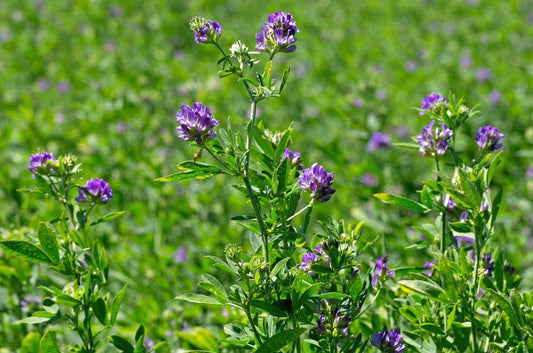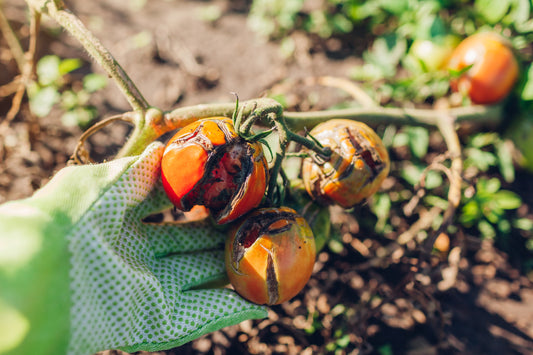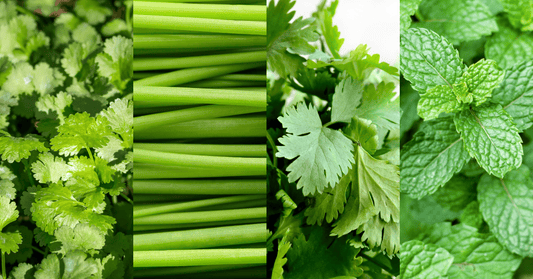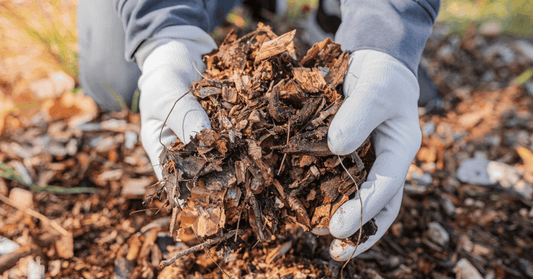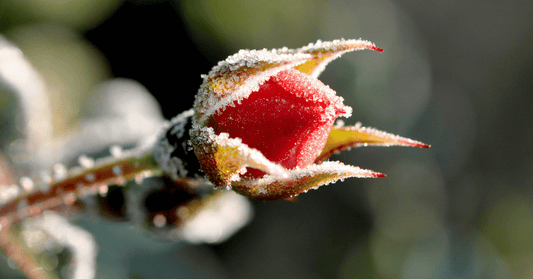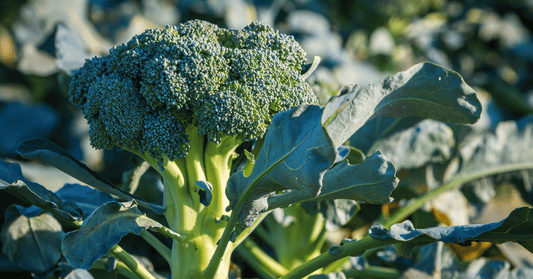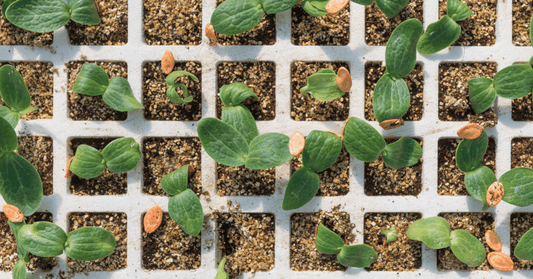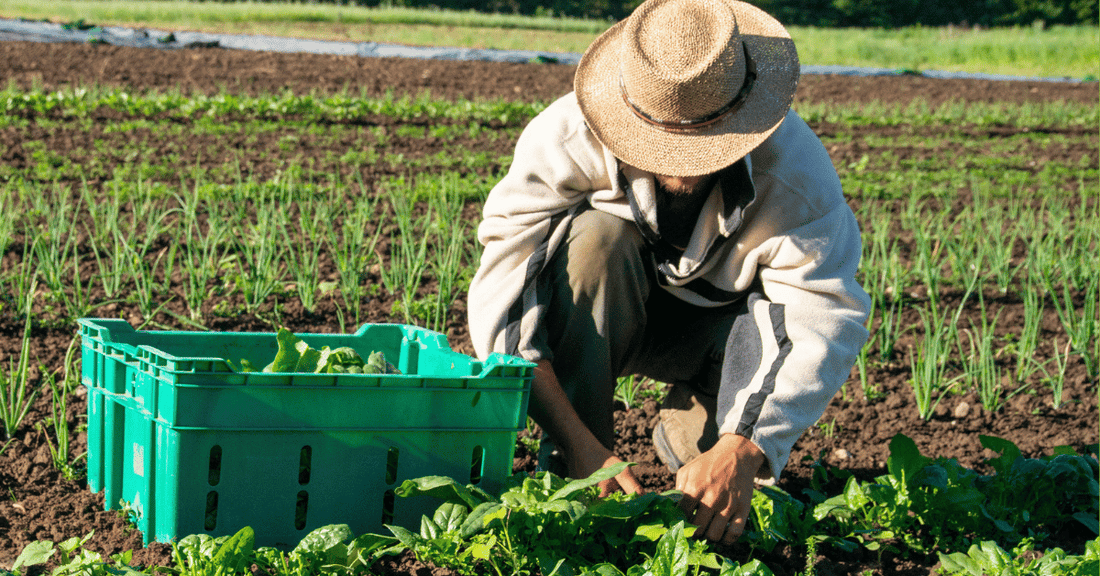
7 Ways to Prevent Disease in Plants
Plant diseases can be devastating and affect crop yields. In order to prevent them, it is important to take steps that can help protect plants from infection. Whether a disease is infectious or non-infectious, taking the necessary steps can prevent its spread and help reduce plant losses.
Just like eating right and getting regular checkups are vital to preventing health issues in humans, providing a healthy environment for your plants is also essential to keep them from getting sick.
Here are seven ways to protect plants against disease:

1. Understand the Mechanism of Infection
Taking the time to understand how a given disease works and spreads can help gardeners identify which plants are more susceptible and which may be resistant. By understanding how a disease develops, it is easier to recognize symptoms and act accordingly.
The three components that can lead to diseases include a susceptible host plant, a pathogen capable of causing disease, and a conducive environment for disease. To prevent this, break the links in the triangle at any point, and the disease will not spread. You can also prevent this by excluding pathogens.
For example, removing blighted potato tubers from the garden can reduce the spread of potato blight disease. Also, cleaning up black spotted rose leaves in the fall can help prevent the spread of black spot fungus on roses. You can also adopt cultural practices that make the environment less conducive to infection.

2. Choose the Right Plants for Your Region
Choosing plants that are well-adapted to the climate of your region is an important factor in disease prevention. Different regions have different fungi and bacteria levels, as well as varying temperatures and moisture levels. So it is better to choose plants that can handle the conditions in your area.
This will also help prevent non-infectious and infectious diseases that might occur due to environmental conditions. Timing is very important, so start thinking about which plants to choose for the upcoming season as soon as possible. Here are things you need to consider when choosing the right plant for your site:
Read the Site
Learn as much as possible about the area you are planting. Consider factors like what's currently growing there. What plants are thriving on nearby, similar sites? Learn what parts of your garden drain poorly. Make sure you observe the sites at different times to understand how sunlight, wind, and shade affect them.
Test the Site
Soil pH, nutrient levels, and water availability are important to plants. If the soil is extremely acidic or alkaline, some plants may not thrive in it. So test your soil with a good quality kit before you plant anything.
Know Your Plants
Before you buy a plant, research its temperature and moisture requirements. Some plants may need more water than others, or they may not tolerate hot weather. Make sure the plants you choose can handle the local climate and soil type.
Find Out About Common Problems
Make sure you are aware of any common diseases or pests that may affect a particular plant in your region. For instance, some regions have more problems with fungal diseases like powdery mildew than others. Knowing this can help you choose the right plants for your area and also help you to recognize signs of infection early on.
Learn How Plants Interact
Some plants can have a beneficial effect on their neighbors. Some can attract beneficial insects that prey on pests, while others may act as natural repellents for certain types of bugs and fungi. A more mundane type of plant interaction is competition for water, sunlight, and nutrients.
Planting landscape trees closely can result in excessive shading and root competition for water and minerals, leading to a stressed and unhealthy tree. So, remember to give your plants enough space for proper growth.

3. Use Disease Resistant Varieties
This is one of the most effective ways to prevent disease. Disease resistance can be a property of certain cultivars or species, so choose those that are known to be resistant to common diseases in your area. You will also find organic and natural varieties that are bred to be more resistant to disease.
These can include such things as pest-resistant tomatoes, mildew-resistant roses, and fungus-resistant trees. This will help you reduce the amount of chemicals you need to use in your garden to control pests and diseases.
4. Keep Your Garden Clean
Keeping a clean garden is essential to preventing disease. Remove dead, diseased, or infested materials regularly and dispose of them properly. Do not compost diseased material, as the pathogen may survive in the compost and reinfect your garden.
Trim overgrown plants back to reduce humidity, allow better airflow, and keep leaves dry. Mulching with organic matter such as straw, grass clippings, or shredded leaves can also help keep moisture levels down and reduce the risk of disease. Practice an extreme form of sanitation called “roguing”. This means removing infested plants as soon as you detect them.
You should also practice roguing before buying plants, as this can help prevent you from introducing diseases into your garden. If you're buying containerized or bedding plants, knock the plant gently out of its pot to inspect the root system for any signs of disease. You can also keep a clean garden by rotating crops to reduce pest and disease buildup in the soil.
Many soil-borne pathogens remain active in the soil for more than one season, so rotating crops helps reduce their numbers. When replanting, site the plants in a different location where the soil has not been used in the past few years. This will reduce disease problems, as well as give your plants access to a wider range of nutrients.
When pruning your plants, make cuts on healthy tissue and avoid wounding the plant. This helps minimize the entry points for pathogens and other disease-causing organisms. Prune your plants regularly to keep them healthy and reduce any stress that can make them more vulnerable to disease.
5. Create a Well Balanced Soil
Healthy soil is essential for healthy plants. The right balance of nutrients and minerals, along with ample organic matter, will help your plants grow vigorously and be more resistant to disease. Choose a soil amendment that suits the type of plant you want to grow.
For instance, an acid-loving plant such as azaleas or rhododendrons will benefit from an acidic soil amendment. Adding organic matter to your soil is one of the best ways to improve its structure, drainage, and fertility. It also helps hold moisture in the soil and encourages beneficial microorganisms that help keep pests and diseases at bay.
Make sure you develop soil with good overall texture, drainage characteristics, and organic matter content to optimize microbe populations. You can also maintain the activity of beneficial microbes in your soil by avoiding chemical fertilizers and pesticides, which can disrupt the delicate balance between soil organisms.
Adding compost to your soil will also help improve its fertility and structure. Composting is a great way to recycle food scraps, grass clippings, and other organic materials while adding valuable nutrients to your garden soil.

6. Remove Diseased Plant Parts
Curing a disease can be tricky, but with proper identification and control measures, you can often prevent it from spreading. Start by removing any diseased parts of the plant to reduce the risk of the disease spreading to other plants. If you notice any powdery mildew, rust, or other fungal diseases on your plants, cut off the affected areas and dispose of them away from your garden.
Another easy method to prevent powdery mildew is to use milk. Make a mixture of milk and water and spray it on the affected areas of your plants. This will not only help reduce the number of spores on your plants but also help to keep them healthy and disease-free.
If you have any diseased plant material in your garden, be sure to remove it promptly and carefully. Place all the removed parts in a sealed plastic bag. You should also sanitize your pruning shears between each cut so you don't spread the disease further, and be sure to dispose of the plastic bag away from your garden.

7. Provide Good Air Circulation
Good air circulation is key to reducing the likelihood of many fungal and bacterial diseases. Plant your crops in rows, allowing enough space between them so air can flow freely throughout the garden. If you have limited space, consider planting plants that are less susceptible to disease or growing them vertically on trellises or stakes.
Also, depending on the type of plants affected by poor air circulation, you can use fans to direct air into the garden or hang heaters and dehumidifiers in cold and damp areas. This will help reduce the amount of moisture in the air and prevent disease outbreaks.
Conclusion
Plants need to be healthy and disease-free in order to give you a bountiful harvest. By pruning your plants regularly, creating healthy soil, removing diseased plant parts, and providing good air circulation, you can prevent diseases from taking hold in your garden. With the right care and attention, your plants will thrive for years to come.
Also, note that prevention is always better than cure. So, take the right measures to ensure that your plants are healthy and disease-free. That way, you can enjoy a beautiful and bountiful garden.
